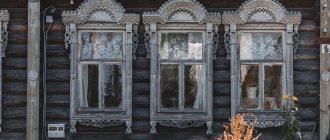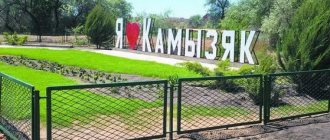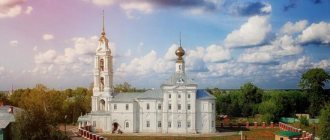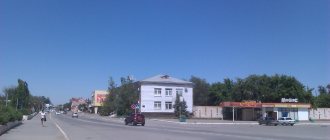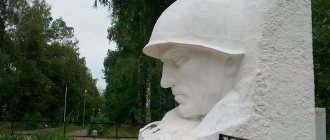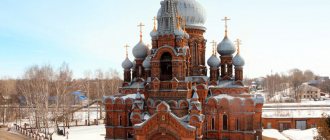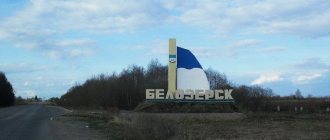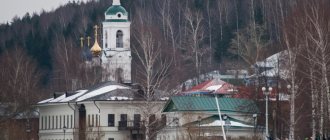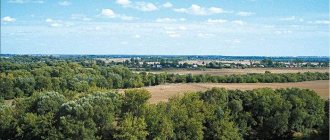general information
The city of Teykovo (Ivanovo region) is located on both banks of the Vyazma River, which flows from west to east and divides the settlement into approximately equal two parts. The older part was built on the higher right bank. It is surrounded on all sides by deciduous forests, and to the southwest there are also large peat mines.
The regional center is approximately 30 km away. Nearby there are roads from Ivanovo to Suzdal and from Vladimir to Yaroslavl and Rostov Veliky. The railway connects the town with the regional center and Moscow. The train from Kineshma to Moscow and commuter trains stop at the Teykovo railway station. From the city bus station you can take a bus to the city of Ivanovo.
Nature, fauna
The relief of the area is a gently undulating and undulating plain with a general slope towards the rivers and streams flowing through its territory. The transition of the watershed to the river floodplains is clearly expressed. The largest floodplain is identified along the Nerl River. The climate of the Teykovsky district is temperate continental with cold, snowy winters and moderately hot summers.
The reservoir for all water flowing within the Teikovsky district is the Nerl, Vyazma, Ukhtokhma rivers and their tributaries. The largest river, the Nerl, flows on the southwestern border of the Teykovsky district, has a short length and flows into the Klyazma River. The remaining rivers feeding the Nerl, Vyazma, and Ukhtokhma rivers are smaller.
The natural vegetation cover of the area is quite diverse. Forests cover 51% of the total area of the region. The main forest areas are located in the northern part of the region. These are mixed forests. Sometimes there are copses with tree species such as oak, maple, linden. Shrubs are common in watershed, partially closed depressions and in river floodplains. This is mainly willow, less often – juniper. Among the mineral resources in the area there are: clay, gravel and sand, peat, sapropel. The fauna of the area is quite diverse, which includes about 20 species of wild animals (elk, wild boar, river beaver, white hare, brown hare, fox, badger, etc.). The muskrat, a Red Book species, lives on the Nerl River. More than 10 species of birds. The rivers are inhabited by pike perch, bream, ide, pike, crucian carp, roach, and ruff. On Teikovskaya land there are state natural monuments: “Alferevskaya Pine”, “Vantinsky Spring”, “Park” in the village of Novoye Leushino, “Krasnovskaya Pine”, “Holy Spring”, Lake “Rubskoe”. The maximum length of the lake is 2980 m, width – 1550 m. Area – 297 hectares. The length of the coastline is 7252 m, the volume of water is 14 million cubic meters, the maximum depth is 16.2 m, the average is 4.7 m. In the lake area there are 650 species of plants and 6 species of fish. 1 km. A linden grove grows from the lake. There are 10 recreation centers on the lake shore.
Base
People have lived on the territory of the city since ancient times. Archaeological excavations at the site of ancient settlements have shown that they began to be built up starting from the 4th millennium BC. On the site of the Ilyinskaya Church towering over the city of Teykovo (Ivanovo region) (belonging to the architectural monuments of the 17th century), the remains of a pagan temple of Perun were found, which dated back to the late pre-Christian period.
The first written mention of the village of Teykovo dates back to the beginning of the 17th century. The Scribe Books describe the peasant riots of 1613, 1618 and 1651, relating to the Time of Troubles. Since 1619, the settlement, then part of the Suzdal district, belonged to two noble families - the solicitor of the grain yard F.I. Bosov and Princess A.G. Tyufyakina. Later it passed to the princely family of the Prozorovskys. The villagers were already engaged in handicraft weaving and dyeing of fabrics at that time. In the center of the settlement there was a trading area where fairs were held.
An excerpt characterizing Teykovo
During his recovery, Pierre only gradually unaccustomed himself to the impressions of the last months that had become familiar to him and got used to the fact that no one would drive him anywhere tomorrow, that no one would take his warm bed away, and that he would probably have lunch, tea, and dinner. But in his dreams, for a long time he saw himself in the same conditions of captivity. Pierre also gradually understood the news that he learned after his release from captivity: the death of Prince Andrei, the death of his wife, the destruction of the French. A joyful feeling of freedom - that complete, inalienable, inherent freedom of man, the consciousness of which he first experienced at his first rest stop, when leaving Moscow, filled Pierre's soul during his recovery. He was surprised that this internal freedom, independent of external circumstances, now seemed to be abundantly, luxuriously furnished with external freedom. He was alone in a strange city, without acquaintances. Nobody demanded anything from him; they didn’t send him anywhere. He had everything he wanted; The thought of his wife that had always tormented him before was no longer there, since she no longer existed. - Oh, how good! How nice! - he said to himself when they brought him a cleanly set table with fragrant broth, or when he lay down on a soft, clean bed at night, or when he remembered that his wife and the French were no more. - Oh, how good, how nice! - And out of old habit, he asked himself: well, then what? What will i do? And immediately he answered himself: nothing. I will live. Oh, how nice! The very thing that tormented him before, what he was constantly looking for, the purpose of life, now did not exist for him. It was no coincidence that this sought-after goal of life did not exist for him at the present moment, but he felt that it did not and could not exist. And it was this lack of purpose that gave him that complete, joyful consciousness of freedom, which at that time constituted his happiness. He could not have a goal, because he now had faith - not faith in some rules, or words, or thoughts, but faith in a living, always felt God. Previously, he sought it for the purposes that he set for himself. This search for a goal was only a search for God; and suddenly he learned in his captivity, not in words, not by reasoning, but by direct feeling, what his nanny had told him long ago: that God is here, here, everywhere. In captivity, he learned that God in Karataev is greater, infinite and incomprehensible than in the Architect of the universe recognized by the Freemasons. He experienced the feeling of a man who had found what he was looking for under his feet, while he strained his eyesight, looking far away from himself. All his life he had been looking somewhere, over the heads of the people around him, but he should have not strained his eyes, but only looked in front of him. He had not been able to see before the great, incomprehensible and infinite in anything. He just felt that it must be somewhere and looked for it. In everything close and understandable, he saw something limited, petty, everyday, meaningless. He armed himself with a mental telescope and looked into the distance, to where this small, everyday thing, hiding in the fog of the distance, seemed great and endless to him only because it was not clearly visible. This is how he imagined European life, politics, Freemasonry, philosophy, philanthropy. But even then, in those moments that he considered his weakness, his mind penetrated into this distance, and there he saw the same petty, everyday, meaningless things. Now he had learned to see the great, the eternal and the infinite in everything, and therefore naturally, in order to see it, to enjoy its contemplation, he threw down the pipe into which he had been looking until now through the heads of people, and joyfully contemplated the ever-changing, ever-great world around him. , incomprehensible and endless life. And the closer he looked, the more calm and happy he was. Previously, the terrible question that destroyed all his mental structures was: why? did not exist for him now. Now to this question - why? a simple answer was always ready in his soul: because there is a God, that God, without whose will a hair will not fall from a man’s head. Pierre has hardly changed in his external techniques. He looked exactly the same as he had been before. Just as before, he was distracted and seemed preoccupied not with what was in front of his eyes, but with something special of his own. The difference between his previous and present state was that before, when he forgot what was in front of him, what was said to him, he, wrinkling his forehead in pain, seemed to be trying and could not see something far away from him . Now he also forgot what was said to him and what was in front of him; but now, with a barely noticeable, seemingly mocking, smile, he peered at what was in front of him, listened to what was being said to him, although obviously he saw and heard something completely different. Before, although he seemed to be a kind person, he was unhappy; and therefore people involuntarily moved away from him. Now a smile of the joy of life constantly played around his mouth, and his eyes shone with concern for people - the question: are they as happy as he is? And people were pleased in his presence. Before, he talked a lot, got excited when he spoke, and listened little; Now he rarely got carried away in conversation and knew how to listen so that people willingly told him their most intimate secrets. The princess, who had never loved Pierre and had a particularly hostile feeling towards him since, after the death of the old count, she felt obliged to Pierre, to her chagrin and surprise, after a short stay in Orel, where she came with the intention of proving to Pierre that, Despite his ingratitude, she considers it her duty to follow him; the princess soon felt that she loved him. Pierre did nothing to ingratiate himself with the princess. He just looked at her with curiosity. Previously, the princess felt that in his gaze at her there was indifference and mockery, and she, as before other people, shrank before him and showed only her fighting side of life; now, on the contrary, she felt that he seemed to be digging into the most intimate aspects of her life; and she, at first with distrust, and then with gratitude, showed him the hidden good sides of her character. The most cunning person could not have more skillfully insinuated himself into the princess’s confidence, evoking her memories of the best time of her youth and showing sympathy for them. Meanwhile, Pierre’s whole cunning consisted only in the fact that he sought his own pleasure, evoking human feelings in the embittered, dry and proud princess. “Yes, he is a very, very kind person when he is under the influence not of bad people, but of people like me,” the princess said to herself. The change that took place in Pierre was noticed in their own way by his servants, Terenty and Vaska. They found that he had slept a lot. Terenty often, having undressed the master, with boots and dress in his hand, wishing him good night, hesitated to leave, waiting to see if the master would enter into conversation. And for the most part Pierre stopped Terenty, noticing that he wanted to talk. - Well, tell me... how did you get food for yourself? - he asked. And Terenty began a story about the Moscow ruin, about the late count, and stood for a long time with his dress, telling, and sometimes listening to, Pierre’s stories, and, with a pleasant consciousness of the master’s closeness to him and friendliness towards him, he went into the hallway. The doctor who treated Pierre and visited him every day, despite the fact that, according to the duties of doctors, he considered it his duty to look like a man whose every minute is precious for suffering humanity, sat for hours with Pierre, telling his favorite stories and observations on the morals of patients in general and especially ladies. “Yes, it’s nice to talk to such a person, not like here in the provinces,” he said. Several captured French officers lived in Orel, and the doctor brought one of them, a young Italian officer. This officer began to visit Pierre, and the princess laughed at the tender feelings that the Italian expressed towards Pierre. The Italian, apparently, was happy only when he could come to Pierre and talk and tell him about his past, about his home life, about his love and pour out his indignation at the French, and especially at Napoleon. “If all Russians are even a little like you,” he said to Pierre, “c’est un sacrilege que de faire la guerre a un peuple comme le votre.” [It is blasphemy to fight with a people like you.] You, who have suffered so much from the French, you don’t even have any malice against them. And Pierre now deserved the Italian’s passionate love only because he evoked in him the best sides of his soul and admired them. During the last period of Pierre's stay in Oryol, his old freemason acquaintance, Count Villarsky, came to see him, the same one who introduced him to the lodge in 1807. Villarsky was married to a rich Russian woman who had large estates in the Oryol province, and occupied a temporary position in the city in the food department. Having learned that Bezukhov was in Orel, Villarsky, although he had never been briefly acquainted with him, came to him with those statements of friendship and intimacy that people usually express to each other when meeting in the desert. Villarsky was bored in Orel and was happy to meet a person of the same circle as himself and with the same, as he believed, interests.
History and population
Since the 17th century, Teykovo was known in the region for the fact that auctions were held here twice a week. Merchants brought “small goods” from the surrounding cities, and peasants traded in bread, wheat, peas, oats, flax, wheels, pots, bast and linen. In terms of trade volume it was almost equal to the city. Approximately 2,000 people lived in Teykovo (Ivanovo region) at that time.
From the middle of the 18th century, textile and cotton manufactories, equipped with high-tech equipment for those times, began to be built in the village. In 1897, there were already 5,800 people living in Teykovo, the population was replenished by peasants from the surrounding villages. Especially after the abolition of serfdom.
After the revolution, in 1918 it received the status of a city, at the same time Teykovo (Ivanovo region) grew due to the annexation of several villages. During the Soviet years it was actively built up and the population grew rapidly. The maximum number of inhabitants (39,100 people) lived in 1998.
Famous natives
- Aksyonov, Alexander Efimovich (1928-2002), honorary citizen of the city, participant in the Great Patriotic War, writer and publicist, forensic medical expert, author of the books “Once in a Lifetime there is a Meeting”, “Victims”, etc.
- Bulanov, Alexey Parfenovich (1916-1992) - Hero of the Soviet Union, born in the city of Teykovo.
- Sharonov, Boris Grigorievich (1925-1982) - Hero of the Soviet Union, born in the village of Zakharovo, Teikovsky district.
- Smirnov, Vladimir Mikhailovich (1934-1990) - writer, author of the novels “Waterfield” and “Red Swans” and several collections of poetry. Born and buried in Teykovo.
- Smirnov, Mikhail Vladimirovich (born in 1963) - son of V. M. Smirnov, journalist, in different years - editor-in-chief of the newspapers “Budni”, “Budni-2”, “Rabochiy Krai”, the magazine “Our Motherland - Ivanovo-Voznesensk” " President of the publishing house "Our Motherland". Born in Teykovo. During his student years, he was the editor and author of the “samizdat” magazines “Young Naturalist” and “Pegasus Torches.” The author of the famous poem “About the mouse-snake-ruff-snake” (“If you take a white mouse and, holding it carefully...”), considered a classic of student folklore, and “Lullaby” (“Embryos sleep in a test tube, pharaohs sleep in Egypt, and in the Moscow Mausoleum, Lenin sleeps blissfully, blissfully...").
- Agashina, Margarita Konstantinovna (1924-1999) - poetess, author of the lyrics “What happened, happened”, “Give me a scarf”, “A birch tree grows in Volgograd”, “Where can I get such a song”, etc. Lived in the city from 1936 to 1943, graduated from Teykovo school No. 4. Mother, Elizaveta Ivanovna, taught German at school No. 4, father, Konstantin Agashin, a surgeon, worked in the Teykovo hospital.
- Gusenkov, Pyotr Vasilievich (1905-1975) - Minister of Medical Industry of the USSR in 1967-1975.
- Kotkov, Sergei Ivanovich (1906-1986) - Soviet linguist, researcher of monuments of ancient Russian writing.
Etymology of the name
There are several versions of the origin of the name of the city of Teykovo (Ivanovo region). According to the authoritative scientist V.I. Yes, the word has Finno-Ugric roots. “Teika” (Thai) means a forest settlement, a forest village, a remote but inhabited place in the forests. Local historian Evgeny Smolin believes that during the Time of Troubles (1608-1612) the Poles founded their temporary camp in these places. Which called the territory “fluid place”, which in archaic Polish sounds like “tekovo”.
Scientist E.M. Pospelov derives the name Teykovo from “Teika,” one of the forms of the very rare female name Argentey, which is in the “Dictionary of Russian Personal Names” edited by N.A. Petrovsky. Many hydronyms and toponyms of the region are of Finno-Ugric and Old Slavic origin, for example Vyazma (“winding”, “winding”), Lake Sakhtysh (“stormy”, “restless”, “seething”, and “tysh” - fishy, rich in fish) .
Notes
- ↑ 123
www.gks.ru/free_doc/doc_2016/bul_dr/mun_obr2016.rar Population of the Russian Federation by municipalities as of January 1, 2021 - THE USSR. Administrative-territorial division of the union republics on January 1, 1980 / Compiled by V. A. Dudarev, N. A. Evseeva. - M.: Publishing house "Izvestia of the Soviets of People's Deputies of the USSR", 1980. - 702 p. — P. 122.
- [docs.cntd.ru/document/895289769 Law “On the administrative-territorial structure of the Ivanovo region”]
- [www.teikovo37.ru/glavnaja/oficialnaja-informacija/ustav-goroda.html Charter of the Teikovo urban district]
- [www.teikovo.by.ru/history.htm People's website of the city of Teikovo]
- Pospelov E.M.
Geographical names of the world: Toponymic dictionary. 2nd ed. - M.: Russian dictionaries, 2002. - 512 p. — ISBN 5-17-001389-2.. — P. 413. - [kartolog.ru/2009/11/spiski-naselennyx-mest-rossijskoj-imperii/ “Vladimir province. List of populated places according to information from 1859", St. Petersburg, 1863]
- ↑ 12345678910111213141516
[www.mojgorod.ru/ivanovsk_obl/tejkovo/ People's encyclopedia of cities and regions of Russia. Teykovo]. Retrieved October 7, 2013. [www.webcitation.org/6KCFpDpIK Archived from the original on October 7, 2013]. - [demoscope.ru/weekly/ssp/rus59_reg2.php All-Union Population Census of 1959. The size of the urban population of the RSFSR, its territorial units, urban settlements and urban areas by gender] (Russian). Demoscope Weekly. Retrieved September 25, 2013. [www.webcitation.org/6GDOghWC9 Archived from the original on April 28, 2013].
- [demoscope.ru/weekly/ssp/rus70_reg2.php All-Union Population Census of 1970 The size of the urban population of the RSFSR, its territorial units, urban settlements and urban areas by gender.] (Russian). Demoscope Weekly. Retrieved September 25, 2013. [www.webcitation.org/6GDOiMstp Archived from the original on April 28, 2013].
- ↑ 123
[ivanovo.gks.ru/wps/wcm/connect/rosstat_ts/ivanovo/resources/4ce371004da3f783837cf741cd117b4b/itogi_vpn2010_table_volume_1.pdf Results of the 2010 All-Russian Population Census, volume 1. Number and distribution of the population of the Ivanovo region]. Retrieved August 8, 2014. [www.webcitation.org/6Rfo0NidC Archived from the original on August 8, 2014]. - [www.perepis2002.ru/ct/doc/1_TOM_01_04.xls All-Russian Population Census 2002. Volume. 1, table 4. Population of Russia, federal districts, constituent entities of the Russian Federation, districts, urban settlements, rural settlements - regional centers and rural settlements with a population of 3 thousand or more]. [www.webcitation.org/65AdCU0q3 Archived from the original on February 3, 2012].
- [www.gks.ru/bgd/regl/B09_109/IssWWW.exe/Stg/d01/tabl-21-09.xls Number of permanent population of the Russian Federation by cities, urban-type settlements and districts as of January 1, 2009]. Retrieved January 2, 2014. [www.webcitation.org/6MJmu0z1u Archived from the original on January 2, 2014].
- [www.gks.ru/free_doc/doc_2012/bul_dr/mun_obr2012.rar Population of the Russian Federation by municipalities. Table 35. Estimated resident population as of January 1, 2012]. Retrieved May 31, 2014. [www.webcitation.org/6PyOWbdMc Archived from the original on May 31, 2014].
- [www.gks.ru/free_doc/doc_2013/bul_dr/mun_obr2013.rar Population of the Russian Federation by municipalities as of January 1, 2013. - M.: Federal State Statistics Service Rosstat, 2013. - 528 p. (Table 33. Population of urban districts, municipal districts, urban and rural settlements, urban settlements, rural settlements)]. Retrieved November 16, 2013. [www.webcitation.org/6LAdCWSxH Archived from the original on November 16, 2013].
- [www.gks.ru/free_doc/doc_2014/bul_dr/mun_obr2014.rar Table 33. Population of the Russian Federation by municipalities as of January 1, 2014]. Retrieved August 2, 2014. [www.webcitation.org/6RWqP50QK Archived from the original on August 2, 2014].
- [www.gks.ru/free_doc/doc_2015/bul_dr/mun_obr2015.rar Population of the Russian Federation by municipalities as of January 1, 2015]. Retrieved August 6, 2015. [www.webcitation.org/6aaNzOlFO Archived from the original on August 6, 2015].
- taking into account the cities of Crimea
- [www.gks.ru/free_doc/doc_2016/bul_dr/mun_obr2016.rar Population of the Russian Federation by municipalities as of January 1, 2021. Table “31. Population of cities and towns by federal districts and constituent entities of the Russian Federation as of January 1, 2021.” RAR archive (1.0 MB)]
- [lenta.ru/news/2010/11/30/rvsn/ Russia will abandon Topol in favor of Yars] // Lenta.ru
Memorable places
The main attraction of the city of Teykovo, Ivanovo region, is the streets of its historical part. The center organically combines architectural examples of the merchant period (XVIII-XIX centuries) and modern buildings. Which creates a unique flavor, such as on Oktyabrskaya (formerly Third). On which the mansions of wealthy merchants and more modern estates of manufacturers have been preserved. Unfortunately, only the architecturally unique Nikolskaya and Ilyinskaya churches have survived from the large temple complex.
The complex of buildings of the city estate of the 18th-19th centuries, the home of the manufacturer Karetnikov and his son-in-law Nevedomsky, now houses the city and district administration. Next to them stands the building of the Palace of Culture in the style of eclectic classicism, built in 1987.
One of the oldest enterprises in the city is Teykovsky KhBK, founded about 220 years ago. In the 80s of the last century, an almost complete reconstruction of the plant was completed. Buildings built from the 18th to the 20th centuries show the history of the development of the Russian textile industry over two centuries. Many memorable photos of the city of Teykovo (Ivanovo region) show the historical buildings of this enterprise.
Education
The city has 6 secondary schools, 2 vocational schools, a Center for the Development of Children's Creativity, a sports school, and the Yunost stadium.
- school No. 1 (area of Industrialnaya, Leninskaya, Maxim Gorky, Ulyanovskaya streets) 2 buildings
- school No. 2 (station area and Grozilovo) 2 buildings
- Gymnasium No. 3 (Mr. Krasnye Sosenki, in Sosnovy Bor)
- School No. 4 (area of Oktyabrskaya and Komovskaya streets) 2 buildings
- School No. 10 (Mr. Krasnye Sosenki)
- professional lyceum No. 24 (area of Industrialnaya, Leninskaya, Maxim Gorky, Ulyanovskaya streets)
Karetnikov Estate
The complex, consisting of several houses and utility rooms, is an interesting attraction, showing a classic merchant estate with its unique flavor.
Over the many years of its existence, the Karetnikov estate has undergone large-scale redevelopment more than once, but restoration work, which was carried out under the strict control of historians, recreated its original appearance. The place is well-kept, it’s a nice place to spend time with children, introduce them to the culture and way of life of antiquity, and also show them a piece of history.
Location: Lenin Square - 4.
Palace of Culture named after. Lenin
Many enterprises and residents of the city took part in the construction of the palace of culture, everyone tried to make their contribution. The result was a “people’s house”, within the walls of which many significant events took place for Teikovo residents. Many circles worked on the basis of the Palace of Culture. The creative amateur group, a large academic choir, continues its activities to this day.
Location: Lenin Square - 2.
